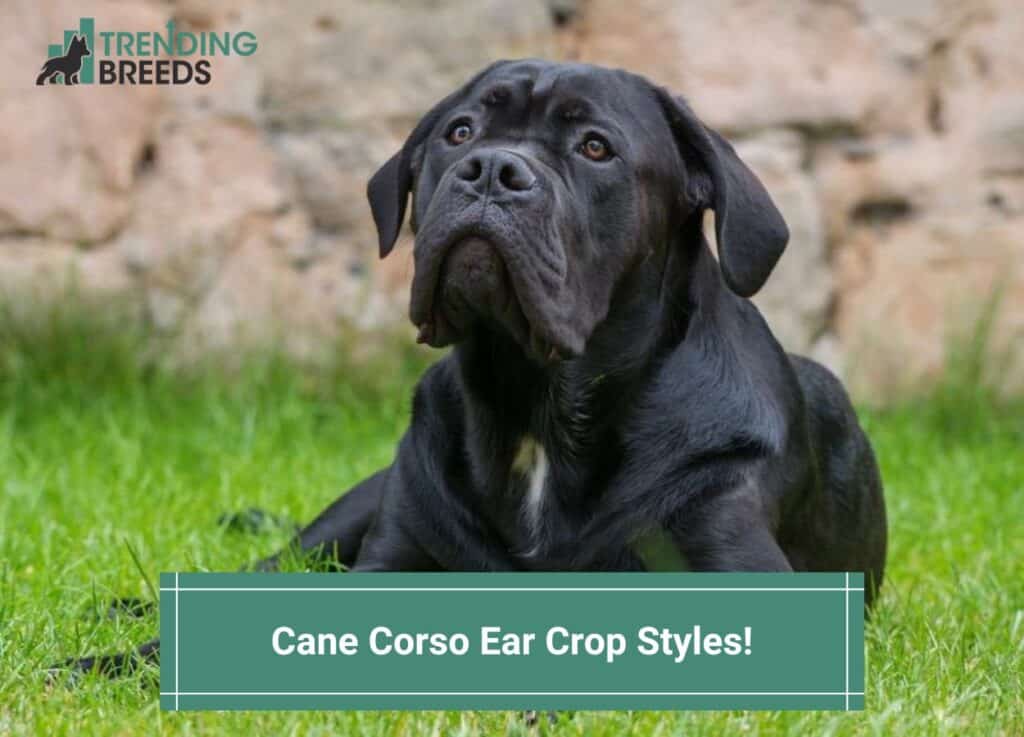
Ear cropping has fallen out of favor with dog owners and people who care about animals in modern times. However, it’s still increasingly common among some dog breeds, with Cane Corso ear crop styles being among the most popular modifications.
In this article, we will look at Cane Corso ear crop styles, the benefits, risks, and aftercare requirements of this procedure.
Other articles you would like: Have A Scaredy Cane Corso? and Formentino Cane Corso Guide
Table of Contents
What Are the Most Common Ear Cropping Styles?

Cane Corso owners typically choose between four distinct Cane Corso ear crop styles, including:
The Battle Crop

The battle crop is the most common kind of Cane Corso cropped ears style. The method is prevalent since it leaves the remaining ear in its shortest possible form, which gives the Cane Corso a frightening appearance.
However, this cropping style doesn’t protect your dog from dirt and insects as it’s a low cut.
The Long Crop
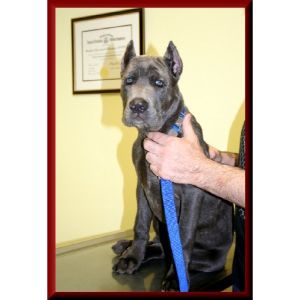
The next of the Cane Corso ear crop styles removes the small ear part while leaving the biggest possible part. Since the bigger part of the ear is left on the dog, you’ll undoubtedly need to tape the dog’s ear following the procedure to remain straight while it heals.
The Show Crop
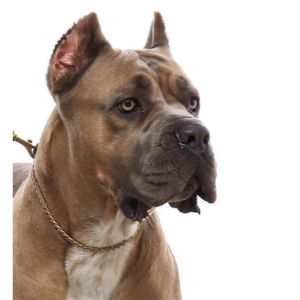
The style makes the ears a bit shorter than the long crop. Show crop is the perfect cropping style for an alert look. Consider the crop style if your dog has a rounded head.
Of the Cane Corso ear crop styles, it isn’t easy to properly execute this crop. Therefore, you need an expert for it to be done correctly. In addition, wrapping and posting the ears in show cropping also require a lot of time.
The Short Crop
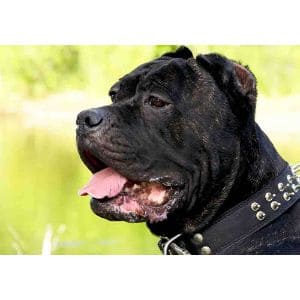
The length of the cut is shorter than the show crop but longer than the battle crop. It’s short enough to render it attractive to individuals seeking a dog with an intimidating appearance. The short crop is one of the most popular Cane Corso ear crop styles.
Why Do Cane Corso Owners Crop Their Ears?

Here are several reasons why Cane Corso owners crop ears.
Appearance
Some dog owners today still choose to crop their Corso’s ears for the sake of appearances, to make their pet look more frightening. A dog with perked ears exudes an impression of authority that makes you cautious about getting too close to it.
A dog with its ears cropped seems ready for a battle, which is one of the most compelling reasons for owning such a dog.
To Prevent Infections
Some individuals believe that drooping ears raise the risk of ear infections. If your dog has drooping ears, you may not notice when they have a middle ear infection, thus missing treatment.
Hearing loss might occur in such a situation or if your dog suffers from recurrent infections.
Ear infections do not result from uncropped ears, but they may be harder to spot. On the other hand, it’s hard for infections to go unrecognized if a dog has short-cropped ears.
Nevertheless, it’s worth noting that there’s no prior evidence that ear cropping serves a medical function, such as preventing infections.
Lice, fleas, and bacteria flourish in dark and warm habitats. By keeping the ears shorter, you may create an airy and less humid environment, which will help to deter these parasites.
Furthermore, it creates an atmosphere that is simple to examine, allowing you to remove any pests that may be hiding.
To Improve Hearing
Some individuals crop their pets’ ears, believing it improves the dog’s hearing.
Such dog owners argue that, contrary to the numerous dog breeds resulting from selective breeding, no naturally occurring dog has floppy ears that completely seal the ear canal from light and air.
The practice, in their perceptions, restores the ear’s normal, upright position. Nevertheless, there’s no conclusive evidence showing that to be true and basic logic suggests that they have adequate hearing even without cropping.
Safety
Dog owners do ear cropping for safety reasons. Dogs run the risk of accidentally injuring their ears during play or work. That might result in abrasions and rips in the ear.
After undergoing cropping, the dogs have a reduced risk of sustaining such injuries. That’s of utmost significance for hunting or working dogs.
Why You Shouldn’t Consider Cane Corso Ear Cropping
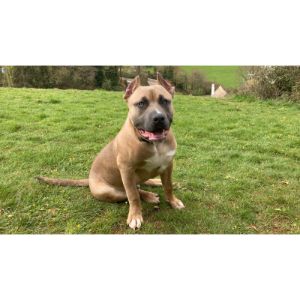
The procedure is excruciating. For it to be successful, it necessitates anesthesia medication because the dog can’t withstand the procedure. Worse yet, the medications can induce adverse reactions in some dogs.
Typically, a vet will prescribe painkillers following the procedure since many owners report seeing their dogs wail in pain whenever a person or an object touches their ears.
And while dogs may not be able to communicate their discomfort, it does not negate the fact that they experience it.
Ear cropping also results in heavy bleeding. Flaps of skin on a dog’s ears receive their blood supply from offshoots of the superficial carotid artery.
As a result, countless microscopic blood arteries within the tissue might cause prolonged bleeding during and after the operation.
Furthermore, there’s a slight possibility that the dog will become wary or fearful of the veterinarian.
Although this is rarely an issue when youngsters are the recipients of an ear crop, it is something to think about if you have a senior dog and you’re considering having its ears cropped. However, that may rely on the dog’s temperament and level of sociability.
The procedure can alter a dog’s ear functioning. The dogs cannot lower or pull them back as they would before the cropping, making it more difficult for them to communicate.
Learning a lot is possible just by watching your dog’s ears move. Dogs express themselves through the following methods:
- Vocalizations
- Facial expressions
- Olfactory cues
Thus, you’re putting them at a disadvantage because their ears will not function properly.
When Is the Appropriate Time to Crop a Cane Corso’s Ears?

Typical ear cropping ages for Cane Corsos are between 8 and 9 weeks, although certain veterinarians suggest 12 weeks as well. There are several reasons why this period is appropriate.
If your puppy is less than eight weeks old, the vet can’t know how the ears will appear in the years to come. As a result, your puppy may develop abnormally shaped ears.
Depending on the vet’s assessment of the puppy’s ear anatomy, some pups can undergo the procedure as early as six weeks.
It’s not advisable to do cropping at a later age than 12 weeks because dog ears get heavier as they mature. That causes the cartilage to fold over and eventually stiffen.
Consequently, the ear cartilage becomes rigid and upright. Beyond that point, there’s less possibility that your dog’s ears will be erect after cropping.
If you notice that your pet falls even marginally outside of these parameters, it is in your best interest to take him to the vet. Whether or not cropping is viable depends on the vet’s evaluation of your dog’s cartilage pliability and thickness.
If you have an adult dog and you’re thinking about Cane Corso ear crop styles, it’s not entirely out of the question. The fact is that some vets will accept conducting the procedure on an adult dog, whereas others will refuse if the dog is beyond a particular age.
All you need to do is locate a professional ready to carry out the procedure.
Your puppy’s age does not appear to be of much significance when ear cropping. If you suddenly feel that you wish your six-month-old puppy to undergo cropping, you’ll undoubtedly locate somebody ready to do it for you.
Is It Cruel to Crop Cane Corso Ears?

Controversy surrounds Cane Corso ear crop styles. Some consider it cruel to crop a dog, whereas others don’t see its importance. Moreover, having your dog’s ears cropped has both benefits and drawbacks.
Thus, it’s essential to acquire as much information as possible regarding the issue before making a choice.
Veterinarians consider the practice cruel when undertaken purely for cosmetic reasons. Nevertheless, some people don’t consider the practice barbaric if it prolongs a dog’s life or keeps it safe.
The primary justification against cropping a dog’s ears is that the procedure causes needless discomfort.
Additionally, most individuals consider it a form of disfigurement and that people only do ear cropping to give the impression that a dog is harsh or dangerous.
Among the many conflicting points of view, it’s entirely up to you to choose whether or not to have your dog undergo cropping. It’s also dependent on your place of residence and whether or not the practice in question is lawful.
Cropping might result in pain and discomfort. On the other hand, the practice is thought to protect a dog’s ears from infections and even boost a dog’s hearing.
Thus, the response to the ethical issue of whether or not the practice is inhumane boils down to the individual and their motivations.
Caring for a Cane Corso After Ear Cropping

Following the procedure, Cane Corsos will recover quite fast. Complete healing of the ears usually takes between 4 and 8 weeks.
Nevertheless, it could take as long as three months for some dogs. Taping your dog’s ears can allow the cartilage to recover while maintaining an erect position.
It is essential to clean your dog’s ears frequently and remain vigilant of any indicators of infection, such as discharge or inflammation. To ensure your dog’s ears are thoroughly clean, you will need to use an ear cleaning solution to facilitate recovery.
Furthermore, you’ll need to avoid any interference with the ears during the healing period to recover properly.
Ideally, gently dip a cotton ball in your ear cleaning solution and use it to cleanse the dog’s ears. To prevent injury, avoid going too deep into the ear canal.
When cleaning your dog’s ears, apply a thin coating of antibiotic cream to the cuts. That will help prevent infection. Your dog’s ear-cropping veterinarian will typically be the one to prescribe that.
If you notice any signs of infections, you must take your dog to the veterinarian as soon as possible.
Conclusion For “Cane Corso Ear Crop Styles!”

The debate over whether or not to have your Cane Corso ears cropped is, like any lively discussion, rife with reasonable concerns on both sides. Luckily, most individuals always have the leeway to choose for themselves.
However, regardless of why you want to do it, you must educate yourself about the procedure, what it requires, and the different Chart Cane Corso ear crop styles.
You will also like:
For more information about the Cane Corso Breed, check out the video below:




